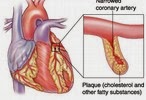Tuberculosis (TB)

Tuberculosis (TB)
Tuberculosis, MTB or TB, which was formerly known as Consumption”, “Phthisis pulmonalis, is an infectious bacterial disease that is caused by mycobacteria mainly by “Mycobacterium tuberculosis”.Lungs are the main site of infection in the tuberculosis, but other systems of the body are also infected. Tuberculosis spread through air droplets from a person who has active disease through respiratory system.
Introduction & Background
Tuberculosis is an infectious bacterial disease that is caused by mycobacteria mainly by “Mycobacterium tuberculosis”. Tuberculosis spreads through air droplets formed during coughing, sneezing. The typical symptoms of the tuberculosis include chronic coughing, fever, bloody sputum, weight loss etc. Tuberculosis mainly affects lungs but other organs of the body are also affected. When in addition to lungs other organs of the body are infected then the patient shows widespread of symptoms in addition to the typical symptoms of tuberculosis i.e., fever, chronic cough, weight loss, bloody sputum.
It is said that about 30 % of world’s population is affected by tuberculosis. In 2007, there were 13 million reported cases of chronic tuberculosis worldwide and in 2010; 8.8 million new cases were registered with 1.5 million deaths most frequently in developing countries. The rate of incidence of tuberculosis varies in different countries. The incidence rate of tuberculosis is almost 75-80 % in Asia and Africa while in United States of America (USA) it is quite less i.e., 5-10%. Most people in developing countries develop tuberculosis because of poor hygienic conditions and weak immune system.
Tuberculosis is high risk disease for the people, who are living in or traveling to the following areas,
- India
- China
- Mexico
- Southeast Asia
What is Tuberculosis?
Tuberculosis is an infectious bacterial disease that is caused by mycobacteria, acid fast bacilli mainly by “Mycobacterium tuberculosis”. Tuberculosis mainly spreads through air droplets formed during coughing, sneezing.
The typical symptoms of the tuberculosis include chronic coughing, fever, night sweats, bloody sputum, weight loss and loss of appetite etc. Tuberculosis mainly affects lungs but other organs of the body are also affected. When in addition to lungs other organs of the body are infected then the patient shows widespread of symptoms in addition to the typical symptoms of tuberculosis i.e., fever, chronic cough, weight loss, bloody sputum.
Sign & Symptoms of Tuberculosis
Tuberculosis can affect any organ of the body but lungs are main site of infection and this type of tuberculosis is known as pulmonary tuberculosis. There may be extrapulmonary tuberculosis when mycobacteria affect other organs of the body except lungs. Tuberculosis may be of active or latent type. In latent tuberculosis, the patient has bacterial infection but the mycobacteria are in an inactive state and do not cause typical symptoms of the tuberculosis. The latent tuberculosis, also known as inactive tuberculosis, is not contagious like active tuberculosis. The latent infection can transform into active disease, therefore treatment of the latent form of infection is also necessary. Active tuberculosis starts with fever and chronic cough and is easily transmitted from one person to other through respiratory droplets.
The general signs and symptoms of tuberculosis are followings,
- Fever
- Chronic Cough
- Blood tinged sputum
- Weight loss
- Night sweat
- Chills
- Malaise
- Loss of appetite
- Finger clubbing
- Chest pain
- Difficult breathing
The tuberculosis may be pulmonary or extrapulmonary depending upon the site of infection.
- In 90 % of cases, the site of infection is lungs and this condition is known as pulmonary tuberculosis. This type tuberculosis manifests itself with chest pain and coughing with sputum. In 25 % of cases of pulmonary tuberculosis, the patients remain asymptomatic i.e., do not show the symptoms. Some of the patients cough up blood in small amount, and in rare cases there may be erosion of pulmonary artery that leads to massive bleeding. There may immense scarring of upper lobe of lungs.
- In 15-20 % cases of active disease, the infection may spread outside the lungs. Sites of extrapulmonary tuberculosis are following,
- Pleura of lungs
- Central nervous system (CNS)
- Genital system
- Bones and Joints (Osseous tuberculosis)
- Lymphatic system (Scrofula of neck)
- Skin
Most serious form of extrapulmonary tuberculosis is miliary tuberculosis that is widespread form of infection.
When to See Your Doctor?
The patient must visit his family physician when there is fever, persistent coughing, unexplained weight loss, night sweats, and loss of appetite. The doctor might advise to undergo laboratory investigations or chest X-rays for further diagnosis. Chronic coughing, fever and weight loss are main symptoms for tuberculosis because other symptoms may result from other medical problems.
If you are suspicion of tuberculosis then you must immediately consult your family physician but before appointment with a doctor you must prepare some questions in your mind such as,
- What are the main symptoms and when did these started?
- Were you immunized in the childhood?
- Did you have tuberculosis in past?
- If you had tuberculosis then did you take medicine against mycobacteria?
- Do you have AIDS or HIV?
- Does anyone in your family have active form of tuberculosis?
- What do you do?
- Do you smoke?
- Do you take alcohol?
These are the questions that are usually asked by the doctor and these must be answered properly because these things are closely link to the manifestation and development of the disease.
How Tuberculosis is diagnosed?
There are separate tests and laboratory investigations for active and latent types of infections. Chest X-ray and sputum culture are the initial evaluation tests performed in active disease. Interferon γ release assay (IGRA) and skin tuberculin test is of little significance in an active disease. Define diagnosis is made by observing mycobacterium tuberculosis in the sample (culture) or biopsy of lungs. Almost 6 weeks are required for the growth of the organism therefore it is a time requiring process. For rapid diagnosis of tuberculosis, nucleic acid amplification test (PCR) and adenosine deaminase tests are performed.
For diagnosis of latent form of infection, Mantoux Tuberculin Skin test is performed. Tuberculin test is falsely negative in patients of Hodgkin’s lymphoma, sarcoidosis and malnutrition. Interferon gamma release assay (IGRA) is performed in patients who are positive for Mantoux tuberculin skin test.
Risk Factors
A healthy immune system is the main factor in the fight against tuberculosis. Overcrowding and malnutrition are closely linked risk factors for catching tuberculosis. There are many other risk factors for the development of the tuberculosis, such as;
- Diabetes
- AIDS
- HIV
- Malnutrition
- End stage renal disease
- Overcrowding
- Chronic lung disease
- Silicosis
- Smoking
- Drinking
- Crohn’s disease
- Psoriasis
- Advancing age
- Certain type of cancer
- Cancer chemotherapy
- Certain drugs such as corticosteroids, infliximab etc.
Complications
Tuberculosis is life threatening infectious disease that may become fatal if not treated properly. The bacteria may spread to other parts of the body through blood stream. There may following complications of organs of the body,
- There may spinal pain and joint destruction when tuberculosis affects bones.
- When tuberculosis affects brain, then it may cause meningitis and sometimes it may also lead to swelling of the meninges.
- Tuberculosis may also lead to cardiac temponade if it affects the tissues surrounding the heart. This leads to fluid accumulation that interferes with contractile ability.
- Functioning of the liver as well as of kidney is impaired when these organs are affected by the tuberculosis.
Treatment
Antibiotics are used against mycobacteria. Treatment of tuberculosis is much difficult because of unusual structure of cell wall of mycobacteria that prevents the entry of the drugs. Medications against tuberculosis are available but it takes much longer time for treatment than other bacterial infections. 6-9 months period of antibiotics medication is required for complete recovery from tuberculosis and in case multi drug resistant strains of mycobacteria, the treatment period may be 12 months. The time period of treatment and choices of drug depends upon the age, health condition, drug resistance and, active and latent form of tuberculosis.
Followings are most common drugs used for the treatment of tuberculosis,
- Isoniazid
- Rifampin
- Ethambutol
- Pyrazinamide
In case of latent type of infection, only one type of drug is usually used but in active form of disease, combination of drugs is used for 6-9 months.
Side effects are also common due to the use of anti-mycobacterial drugs. Following are important side effects of drugs used in treatment of tuberculosis,
- Nausea
- Vomiting
- Jaundice
- Optic neuropathy
- Fever
- Dark colored urine
- Abdominal pain
- Burning and tingling sensations of fingers.
Preventions
- Getting immunization against tuberculosis properly.
- Maintaining personal hygiene.
- Having an active and healthy lifestyle.
- If the patient has only latent form of infection, then it is advised to take medications properly to reduce the risk of having active form of disease. Only active form of tuberculosis is contagious that can be transmitted from one person to other person. So only proper medication is required in latent disease.
- Unfortunately if you got tuberculosis, protect your family from contamination.
- If you have tuberculosis, do not go outside the house and stay inside a specified room during first few weeks of treatment because there is greater risk of contamination.
- Use handkerchief during laughing, sneezing and coughing.
- There should be proper ventilation of the room in which patient is staying because tuberculosis is easily transmitted in closely spaced and congested rooms.
- Cover your face with a surgical mask to prevent the spread of respiratory droplets.
Lifestyle modifications & Home Remedies
There is no complete home remedy for tuberculosis but home remedies are used to control the symptoms, boost up the immune system and combat the side effects of the drugs. Home remedies alone are not sufficient for the treatment of tuberculosis.
- Herbs are quite useful in the home remedies. Green tea is most commonly used as home remedy in tuberculosis because green tea has antioxidant properties that strengthen the immune system.
- Eucalyptus and spearmint may also provide some relief from symptoms.
- Garlic is also used as a herb because of its antibacterial properties and it also strengthens the immune system.
- Eat vitamin B and iron rich foods such as green vegetables and whole grains.
- Use antioxidant rich foods such as blueberries, tomatoes etc.
For downloading the article in PDFs format, click on the following button;
Featured Articles
Other Topics |























Leave a Reply